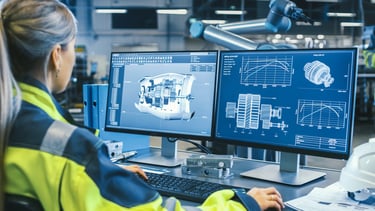Automation design and system integration: When designing automation for the future, consider open source, capital costs, evolution, multi-vendor capability and cybersecurity.
 Great product design using automation and controls isn’t just about solving existing problems faster and cheaper than others. It’s about living in the future. Don’t just do a better version of the same thing. Ask where the industry is heading, ask customers where they want to go, and then design a product that can live in that future.
Great product design using automation and controls isn’t just about solving existing problems faster and cheaper than others. It’s about living in the future. Don’t just do a better version of the same thing. Ask where the industry is heading, ask customers where they want to go, and then design a product that can live in that future.
The future we are asked to deliver is connected. Connection implies openness. From a design perspective, this is great, because openness benefits the product designers and end users.
Five low-risk ways to try something new
For example, the following five design tips can help in selecting and integrating automation devices and systems.
- Open-source: Many human-years have been expended in developing features for closed operating systems where mature open-source solutions already exist. Open-source fosters innovation by lowering barriers to entry and increasing the size of the talent pool. With lower licensing restrictions, designers can try out new technologies with very low risk. They also become part of a community of developers working on other interesting projects. These projects can be tapped to create new opportunities for customers.
- Lower capital costs: Lower up-front investment also provides the flexibility to pick up and put down feature development as priorities change. As a vendor, you never know for sure which features are going to hit, so the flexibility to try things out and deliver new features increases the chances of success. With an open environment and off-the-shelf components, product development can focus on outcomes for customers rather than reinventing a proprietary wheel.
- Easy evolution: As the industry evolves, customers will look to solutions that can evolve.
- Multiple vendors: The need for openness should also impact the designer’s choice about the standards they support in the products being designed or retrofit. In a connected future, it doesn’t make sense to play in a sandbox built for only one vendor.
- Cybersecurity: Connection also demands security. Future-ready products have to operate in a larger arena than ever before. It is a world where every actor is not a known entity, and where the threat of a cyberattack is increasing. Fortunately, hearkening back to the previous point, enterprise-grade open-source security standards are available. Why not take advantage of them?
Openness, flexibility, and security lead to scalability. Many of those designing, using and integrating automation and controls have a lot of growing to do before creating a truly Industrial Internet of Things (IIoT). Early efforts will need to constantly scale. Will your product-design efforts be a part of creating that future?
View the original article and related content on Control Engineering
https://www.controleng.com/articles/five-automation-design-tips-for-the-future/









